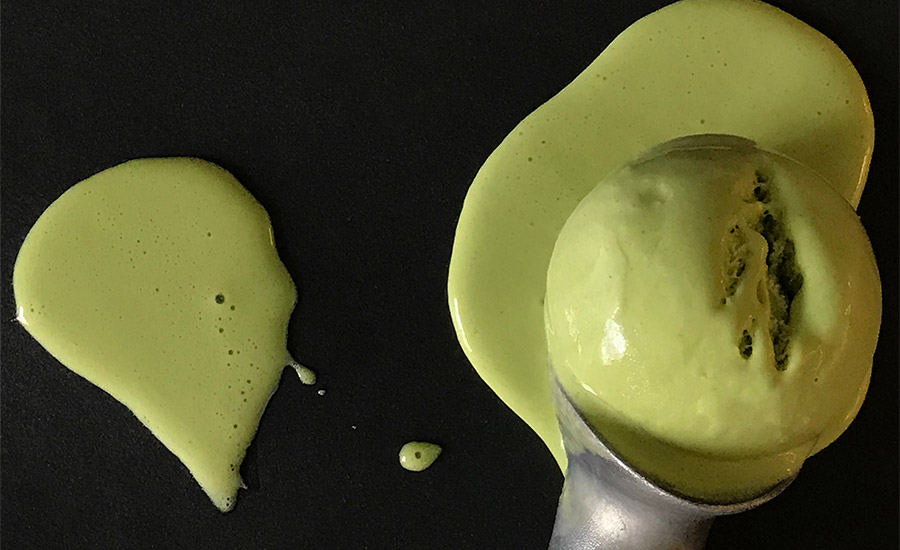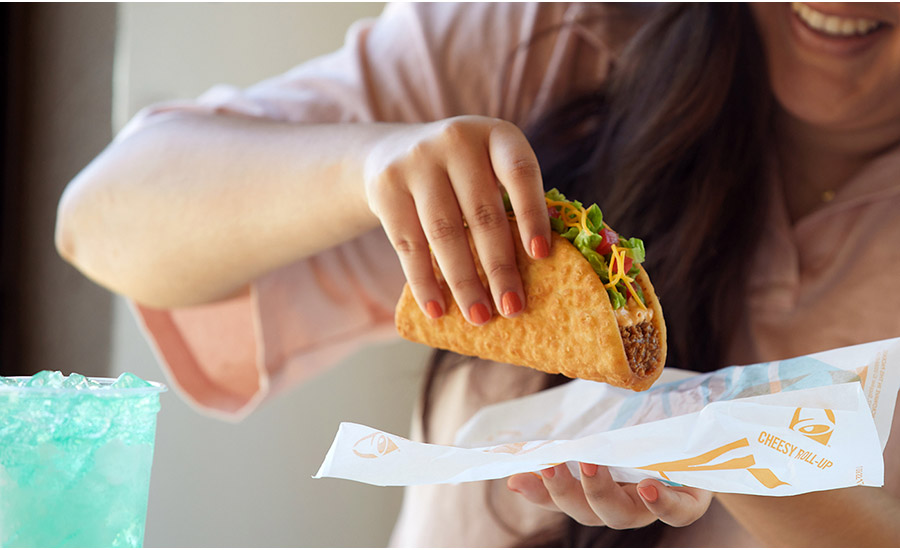Back in 2020, food service certainly was one of the earliest and hardest-hit casualties of the coronavirus shutdowns. With restaurants forced to close for in-person dining, many dairy companies had to pivot away from food service orders to meet rising retail demand.
As customers returned to in-person dining, they also came back with new ideas around eating out. According to Marshall Reece, senior vice president of sales and marketing for Associated Milk Producers Inc., New Ulm, Minn., 2022’s consumer has a different mentality when dining in restaurants than before the pandemic.
“Dining out has become a ‘special occasion’ experience once again. With special occasions come special expectations,” he notes. “They are more apt to order comfort foods and indulge a bit more with appetizers, main dishes, and desserts.”
However, when consumers do eat out, they are often choosing dishes made with dairy, says Reece.
Because expectations for dining experiences have shifted, chefs are asking their [dairy] foodservice partners to help them create “one-of-a-kind experiences” to drive consumers back into restaurants, explains Nicki Schroeder, chief revenue officer, High Road Craft Brands, Marietta, Ga.
According to Heather Mottershaw, vice president, pipeline innovation and product development for Taco Bell Corp., Irvine, Calif., dairy continues to be a popular choice in foodservice due to its versatility and appeal to many types of people.
“At Taco Bell, we pride ourselves on providing craveable flavors and menu options that everyone can enjoy, whether vegetarian or flexitarian,” she adds. “The dairy products featured across our menu help us do just that.”
A desire for international flair
With eating out treated as a special occasion — and traveling still limited — many diners want to see the world through their forks. Chefs can offer a “window to the world” by creating dishes with international flair, notes Nicki Schroeder.
“Chefs are taking diners on a journey via the dinner and dessert plates,” she explains. “Mexican tres leches cakes, Lebanese rose water rice pudding [and] Indian kulfi (a spiced and nutty frozen custard in cone molds) honor the places people want to go — but with COVID, can’t make the trip in person. But the right chef can transport them there at the end of a spoon.”
Lizzy Freier, director of menu research and insights at Chicago-based consulting firm Technomic, views international dairy products as one of the top trends in foodservice right now.
“Whether they be global cheeses, fermented dairy products like kefir, strained yogurts like tzatziki or labneh, global dairy-based desserts like malabi or yogurt beverages such as ayran, there’s a lot of up-and-coming global dairy products that are finding momentum in the independent restaurant space with potential to grow into chains in the coming years,” she adds.
To this end, Nicki Schroeder says High Road Craft Brands is currently working on an ice cream line for foodservice called Night Market, which is inspired by the flavors of Southeast Asia.
“Southeast Asia has a rich history of being shaped by cultures around the world and have made those influences completely their own. This is our take on these iconic, local flavors into a delicious pint with tastes you don’t have to bargain for,” explains My Nguyen, food scientist at High Road Craft Brands. “No other ice cream lines in the U.S. are centered around the complexities of Southeast Asian flavors — with flavors like Brown Sugar Mung Bean and Jackfruit sorbet.”
In addition to helping diners explore the world, chefs are creating adventurous dining experiences by infusing dairy with trendy ingredients and flavor profiles, explains Freier.
“For example: There’s a Cauli & Carrots dish with cauliflower butter from Nick’s Westside in Atlanta, Adzuki bean ice cream from Gracie’s Ice Cream in Cambridge, Mass., and Heirloom Carrots with harissa yogurt from Meesha 127 in Seattle,” she points out.

Nostalgic, comforting dishes shine
With the stresses of the past two years, many turned to food as a source of comfort. And one comforting dish that has recently been appearing on menus is mac and cheese — with a twist.
“We’re seeing chefs trying new spins on comfort classics — macaroni and cheese with unique additions, for example,” says Reece.
The numbers bear out this observation. Pub mac and cheese was No. 6 on GrubHub Inc.’s “Top Orders of the Year” list in the Chicago-based company’s 2021 "Year in Food" report. The dish was reported to have a 174% growth over the previous year in orders on the app. Mac and cheese also came in third on the app’s top-ordered side dishes list.
Some national foodservice chains are reimagining the nostalgic dish. San Diego-based Qdoba, for example, capitalized on the popularity of its 3-Cheese Queso by creating Mac & Queso — its version of the classic. The offering features Qdoba’s queso along with cavatappi noodles and is available as a create-your-own bowl.
Qdoba’s launch also includes a line of chef-crafted Mac & Queso Signature Eats, the company says. Cholula Mac & Queso bowl or burrito is macaroni smothered in 3-Cheese Queso, topped with Cholula Hot & Sweet chicken, pico de gallo, sour cream, and cotija cheese. The Tex Mex Mac & Queso bowl or burrito features slow-smoked brisket, roasted tomato salsa, corn salsa, and tortilla strips. Finally, the Loaded Mac & Queso burrito contains Mac & Queso, slow-smoked brisket, chile crema, pico de gallo, corn salsa, and tortilla strips in a burrito.
Mac and cheese is also appearing in food service in other new forms. St. Louis-based Panera Bread Co. created a unique spin on mac and cheese by combining the beloved dish with another classic: grilled cheese. The company’s Grilled Mac & Cheese Sandwich, which was launched in the fall, is Panera's signature Mac & Cheese, layered with fontina and mozzarella cheeses, sprinkled with Parmesan crisps, and sandwiched between slices of classic white miche, the company says.
“We couldn't be more excited to bring our new Grilled Mac & Cheese Sandwich to market as the ultimate collaboration that our guests never knew they needed," shares Claes Petersson, head chef, and chief food innovation officer for Panera. "When launching new menu items, we always aim to surprise, delight, and satisfy our guests.”
Comfort food, in general, is trending in foodservice, says Amanda Topper, associate director of foodservice research at global market research firm Mintel, in a press release announcing four key trends in the U.S. foodservice industry.
“In uncertain times, diners cling to the foods they know and love to bring them a sense of comfort,” she emphasizes. “Over the next 12 months, brands should focus on nostalgia and adventure, offering diners a welcome break from life’s stressors.”
Mottershaw agrees, noting that “many people are looking for warm, cheesy, comforting foods that bring back positive feelings of nostalgia.”
Taco Bell’s latest innovation — Chipotle Cheddar Chalupa — fits the cheesy bill here.
“This twist on a fan-favorite menu item features a Chalupa shell with six-month aged cheddar that’s baked directly onto the shell,” says Mottershaw.

Indulge them, mindfully
After initially seeking out comfort foods at the beginning of the pandemic, many diners are re-focusing on their health in 2022, explains the National Restaurant Association.
“Immunity-boosting foods and plant-based sandwiches make up [some] of the Top 10 Trends for 2022, as consumers balance the comfort foods they demanded during the pandemic to refocus on better-for-you options,” notes the Washington, D.C.-based association in its “What’s Hot 2022 Culinary Forecast” report.
According to Reece, dairy products have the health halo that diners seek out, as “they are high in protein and calcium and a source of the good fats our bodies need.”
However, there is still room for decadent dishes. Instead of eating solely “health” foods, diners feel they deserve to indulge a little, Nicki Schroeder points out — they just want to do so “mindfully.”
“Folks want (and feel they deserve) to have their cake…and ice cream too,” she adds. “Smaller portions with full-fat, real-ingredient desserts are what guests are saving room for.”
The chefs with whom High Road Craft Brands works are looking for ingredients — including dairy products — that meet this desire for measured indulgence.
“They want really indulgent, one-of-a-kind offerings that will draw guests into their restaurants and [will] be a reminder at the end of the meal why they love that place so much,” Nicki Schroeder notes.
And the dairy industry would benefit from emphasizing these “luxurious” qualities of dairy when working with foodservice partners instead of its nutritious benefits, says Keith Schroeder, CEO of High Road Craft Brands.
“Indulgence is alive and well,” he points out. “It's time to start touting the qualities that make dairy more delicious, more functional — functional as in real cream is the best with which to make cream sauce — and more satisfying.”
Challenges remain
The elephant in the room is that while people have returned to restaurants and other dine-in establishments, food service is not yet back to its pre-pandemic levels of business.
According to Mintel, some consumers are still focused on saving money, while others are ready to splurge on fine dining experiences — highlighting a divide between the “haves and the have nots.”
“In the months ahead, consumers will continue to tighten restaurant spending, including trading down to more affordable limited-service restaurants,” Topper points out. “Conversely, those with more disposable income will splurge on dining. Regardless, diners will prioritize restaurants they’re already familiar with that offer menu flexibility (e.g., tiered pricing options).”
Additionally, emerging COVID-19 variants such as Omicron raise some concerns. And if restaurants are forced to revert back to practices from the beginning of the pandemic, we might see them yet again sell some pantry products on-site, including dairy, explains Freier.
“The sole fact that foodservice operators were offering grocery products like milk gallons and cheeses by the pound was super interesting, and we could see that again,” she adds.
Despite uncertainty with how food service will continue to adapt to the evolving pandemic, dairy’s place in dishes is certain, notes Keith Schroeder.
“The headwinds from Omicron represent a certain risk, but the receptivity to dairy in foodservice is perennial and has not been threatened by substitutes,” he says. “Great chefs will continue to use milk and cream and butter and cheese — forever.”




